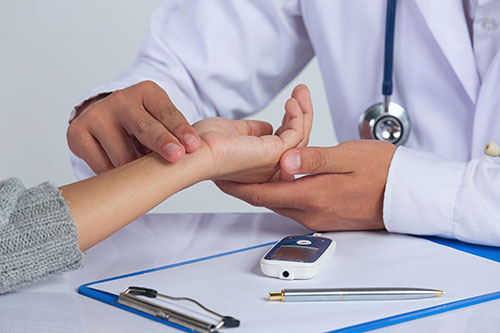Low Pulse Rate
What Is Normal Pulse Rate?
Pulse is felt as rhythmical throbbing at all palpable peripheral arteries. Pulse rate is the number of those throbbing events felt per minute. A pulse corresponds to one cardiac cycle of contraction and relaxation of heart chambers.
Normal pulse rate is usually between 60-100/min in a healthy individual.

What Is Low Pulse Rate?
When the pulse rate is below 60 bpm, it is called as bradycardia (low pulse rate).
What Should One Know About Bradycardia or Low Pulse Rate?
Low pulse rate can be physiological (normal for that individual) or pathological (disease state).
Mostly, this problem is detected by a doctor on routine clinical examination, but nowadays we see pulse rate abnormalities being found out by people themselves, using pulse-oximeter or gadgets.
Most of the time, the bradycardia will not cause any problem and/or will not be associated with any underlying disease. In that case, it merely needs reassurance.
Sometimes, the bradycardia can cause symptoms – e.g., tiredness, breathlessness on working, fainting, etc. Low pulse rate problem can be fatal at times too.
Symptomatic bradycardia is usually associated with underlying disease and eventually needs treatment.
How Do You Treat Bradycardia?
Bradycardia can be due to impairment of electricity generation – production problem (aka sinus node disease) or electricity transmission – shuttle problem (aka atrioventricular node disease).
Sinus node disease is less serious (non-fatal), usually caused by some drugs and needs treatment only if it is persistent and causes symptoms.
The atrioventricular node disease, is usually serious (fatal at times) and needs treatment without delay.
Treatment for both involve pacemaker implantation.
What Should One Know About Pacemakers?
It is a device roughly of match box size implanted under the skin and soft tissues, below the collar bone, usually on the left side, with one or two wires connected to it. The wires are usually positioned in the right sided heart chambers, one in the upper chamber (atrium) and/or the other in the lower chamber (ventricle).
The procedure is usually done under mild sedation with local anesthesia and requires hospital stay of 1-3 days after implant.
Patient needs to come for device check up roughly once in 6 months. Usually, the device does not need lifestyle changes except some precautions while using some electrical appliances, as advised by the physician. Battery may have to be replaced roughly in 8-10 years’ time after the implant.

Dr. Sakthivel R
Consultant Cardiac Electrophysiologist
Kauvery Hospital, Chennai

